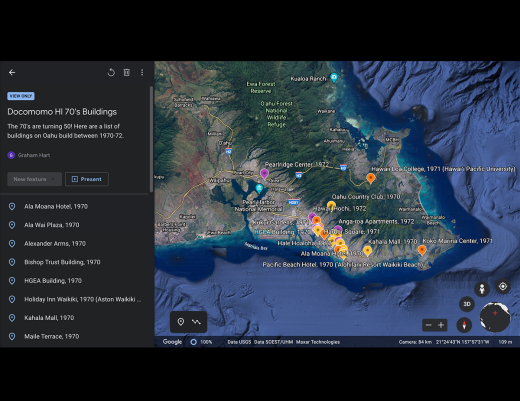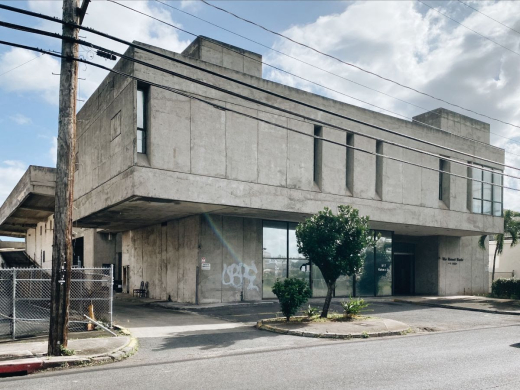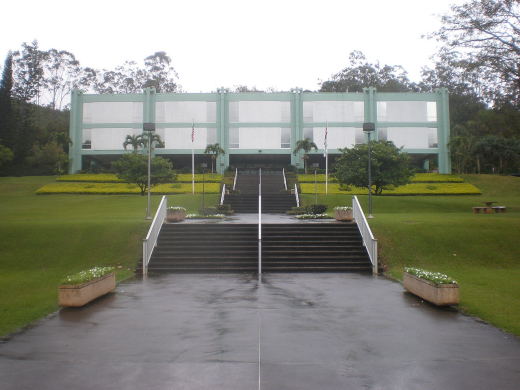By the 1970s, modern architecture in Hawaii had donned many different garbs. To explore the various ways modernism was interpreted in 1970s Hawaii, the chapter has created a Google Earth map of sites in Oahu dating from 1970-72.
Additionally, Docomomo US/Hawaii's annual walking tour (virtual this year!) will explore the theme “The 70s Turn 50” by highlighting five 1970s sites, voted on by chapter members.
Explore these early 1970s sites of Oahu to get a taste for how modernism was evolving in this pivotal decade.
Docomomo US/Hawaii Architecture Map, 1970-72
Author
Timothy Schuler, John Williams, and Don Hibbard
Affiliation
Docomomo US/Hawaii
Tags
The five buildings chosen for Docomomo US/Hawaii Tour Day aptly reflect the variety of modern styles exhibited throughout the 1970s. Here is a brief introduction to these sites. To learn more, join us on October 24th!
Hawaii Hochi
Hawai'i Hochi was designed by Kenzo Tange (1972) for a Japanese newspaper company located in Kalihi, Honolulu. This Brutalist industrial building is the work of a true master of concrete, and the interior courtyard fits well into its tropical climate. It is an oft-forgotten piece of Hawaii's architectural history and is the only building on the list in present danger of disappearing.
Hawaii Loa College
Hawaii Loa College (1971) was designed by Gin Wong from William Perriera & Associates and is inspired by its setting in the Ko‘olau Mountains. Wong is best known for his work on the Los Angeles Airport modernization (the spaceship), a Union 76 station in Beverly Hills (listed on the National Register of Historic Places), and the Transamerica Tower (Pyramid) building in San Francisco, though the firm also designed a number of university buildings.
Marco Polo Apartments
The Marco Polo Apartments (1971), with 573 units, was the largest condominium building in Hawaii at the time. Charles “Ty” Sutton and the firm of Lemmon, Freeth, Haines, Jones and Farrell adapted the sinuous, rippling curves of Oscar Niemeyer's dance hall at Pampulha to a high-rise building. Developer-owners Reed and Martin, the builders of the Hawaii State Capitol, directed the architects to design the largest, most elegant condominium in town, with rounded shapes rather than a rectilinear box.
Hawaiʻi Government Employees Association (HGEA)
HGEA is a 9-story steel frame and concrete shell structure on a raised podium, on the edge of Honoluluʻs Capital District. The architect, Takashi Anbe, was born in Wailuku, Maui, and later attended Washington State University. After working in the office of Pete Wimberly, Anbe established his own firm in 1956. Later his firm became Anbe, Aruga & Ishizu, Architects, Inc.
Hawaiian Electric Company
The Hawaiian Electric Company (1971) building garnered its architects a 1971 AIA award. The award cited the building’s strong expressive forms, skillful use of concrete, excellent detailing, and strong symbolic presence. Pietro Belluschi, the former dean of MITʻs School of Architecture, was a collaborating consultant with local architects Au, Cutting, Smith & Associates.
Join Docomomo US/Hawaii for a virtual tour of these sites on October 24th!







